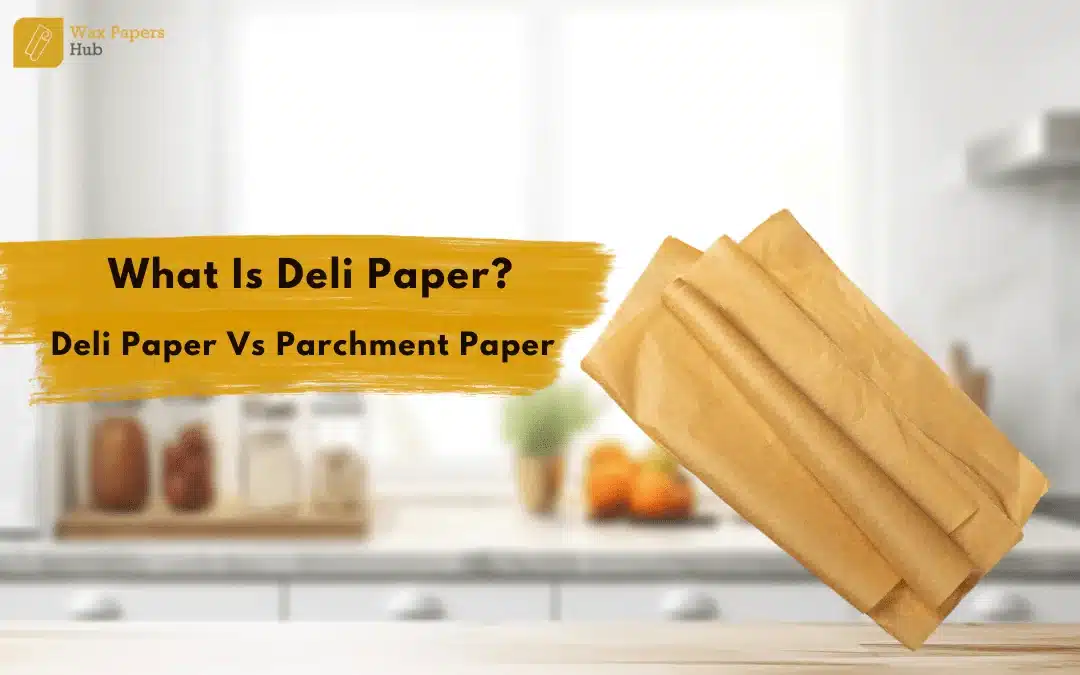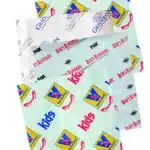What Is Deli Paper? Deli Paper Vs Parchment Paper

What Is Deli Paper? Deli Paper Vs Parchment Paper
Deli paper refers to a sheet-like lightweight substance used by bakers and pizzerias to package their products. There are two primary types: waxed and deli unwaxed paper. This kind has wax on one or both sides thus being moist-proof, especially for those containing fats such as fries.
The second type however seems more porous hence allowing for air circulation in case one needs a sandwich just like a runny nose when sneezing isn’t necessary. They are also transparent typically sold in rolls or placed within boxes where they can be torn out due to the design of the dispenser.
Deli Paper Vs. Parchment Paper: Which Is Better?
Despite being similar in their food-wrapping capacity, deli paper and parchment paper differ greatly in functionality. If you want your sandwiches to stay fresh for longer – choose paper because of its breathability feature. On the other hand, parchment paper possesses silicone coating making it suitable for use in ovens; therefore I highly recommend using parchment paper when baking cookies or lining pans for easy clean-up purposes.
Parchment papers are generally thicker than deli ones and more resistant to high temperatures too. So a better choice depends on whether you want your bread not to get wet or you need heat resistance during the baking process.
Can Deli Paper Go In The Oven?
Deli paper is not good for use in the oven, no. Although some may appear to be heat-resistant, they can melt or smoke at high temperatures, which might spoil your food and cause a fire accident. Stick to using parchment paper for baking because it is developed specifically to deal with the high temperatures of an oven.
All in all, the make-up and characteristics of parchment paper make it more long-lasting especially if there is exposure to heat elements or wetness requiring handling.
Deli Paper Vs Parchment Paper Which Has More Durability?
When it comes to durability, parchment paper reigns supreme. Here’s why:
- What It’s Made Of: Deli papers typically comprise basic paper (sometimes with a wax coating), whereas parchment papers are made from wood pulp treated with silicone, making them naturally tougher and more heat resistant.
- Ability To Withstand Heat: The silicone covering on parchment paper enables it to endure high oven temperatures not exceeding 450°F without igniting or melting while deli wrap papers can easily burn or even burst into flames under similar conditions.
- Moisture Resistance: Moreover, while some types of waxed deli papers provide some protection against moisture as well, this also happens to be where parchment paper excels. Hence silicone sealing allows water retention for fish dishes or prevents oil from escaping when baking so that they do not go soggy.
- Ripping and Tearing: Parchment papers are essentially thicker than their less durable counterparts; hence they are less likely to tear compared to the thin and delicate deli packaging papers.
Overall, parchment paper’s construction and properties make it a more durable choice for tasks involving heat, moisture, or needing to withstand handling.
How To Wrap A Sandwich In Deli Paper – 4 New Techniques:
1. Classic Fold:
- Put a sandwich in the middle of a sheet of square deli paper.
- Fold the paper from below up to cover the sandwich.
- Fold down the top third of the custom wax paper so that it meets the bottom fold.
- Beginning at one side, fold the accordion pleats into it until it meets at the center. Repeat for the other side
- Secure ends by folding them under or using a sticker.
2. Pocket Fold (for Tall Sandwiches):
- Cut out a rectangular piece of deli paper larger than the height of your sandwich
- Place the sandwich on the bottom edge of this piece
- Take one long side and fold it over top of the sandwich
- Roll-up snugly, tucking sides as you roll
- Fasten the remaining end with a sticker or tape.
3. Diagonal Wrap (for Club Sandwiches):
- Use large square sheets of deli paper for this method.
- Place your sandwich diagonally at an angle across one corner on top of your paper.
- Fold down the nearest lower corner over your sandwich.
- Keep folding along diagonal edges while tucking in sides as you go along until you reach the opposite side.
- Stick tape or put a sticker on the last corner to secure it well
4. Furoshiki Wrap (for a Fancy Touch):
- For this technique, you will need larger deli paper squares and some practice. Video tutorials are available online if you search for them.
- Lay flat like a diamond shape through which wrapping is done using furoshiki technique which requires larger sizes of papers as well as extra training found in videos posted online.
- Your sandwich should be placed in its middle part then;
- Opposite corners should come together over the sandwich while two other corners are folded center-folded into each other before tucking and folding their sides creating both safety and attraction around it.
Is Deli Paper The Same As Parchment Paper?
No, deli paper is not the same thing as parchment paper although they are similar in some ways. This is what it means:
Constituents: Deli paper is plain, uncoated paper and maybe waxed for wetness resistance. On the other hand, parchment paper is produced from wood pulp that has been treated with silicone thereby making it more powerful and heat resistant.
Purpose: Deli papers are excellent at wrapping sandwiches because of their breathable nature. With regards to options like oven-safe baking or lining pans for moisture control etc., Parchment Paper comes in handy.
Durability: Parchment paper is thicker, less likely to tear, and can withstand higher temperatures as compared to deli wrapping paper.
In short, deli paper should be chosen for breathability and basic food wrapping whereas heat-related tasks, moisture-sensitive foods, or need stronger packaging should consider using parchment paper.
Conclusion
Deli papers provide a versatile and inexpensive way to wrap many types of food items. It keeps sandwiches fresh by permitting air through its surface hence preventing sogginess. Additionally, there are grease-resistant or eco-friendly versions available. Nevertheless, in terms of having the best heat resistance and moisture control features, parchment papers top the ladder by their being silicon-coated papers. As a result, it all depends on what you specifically need!

















